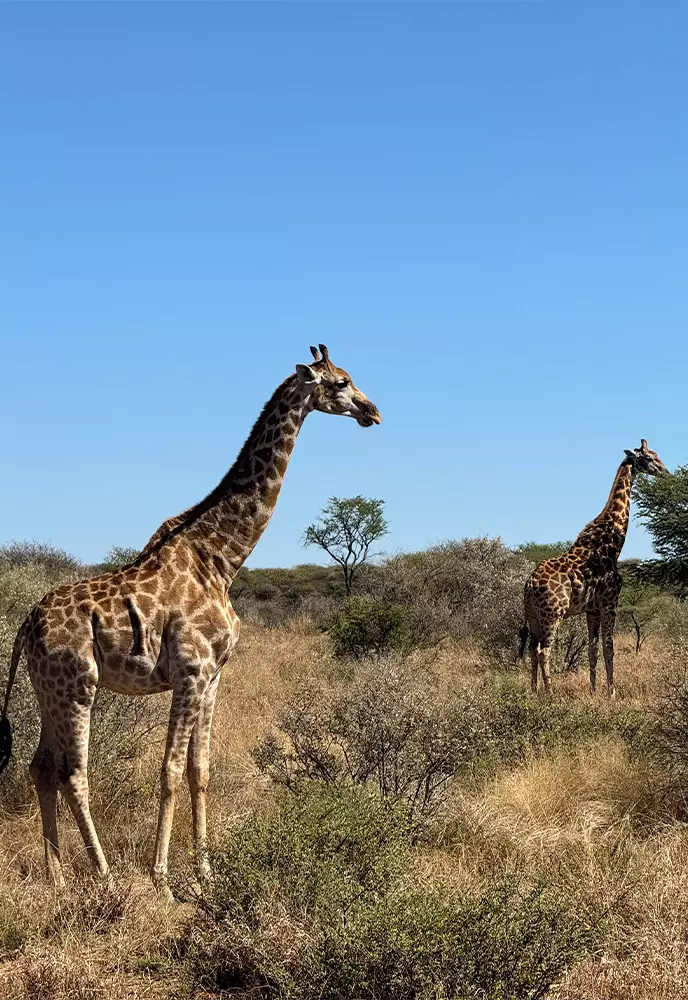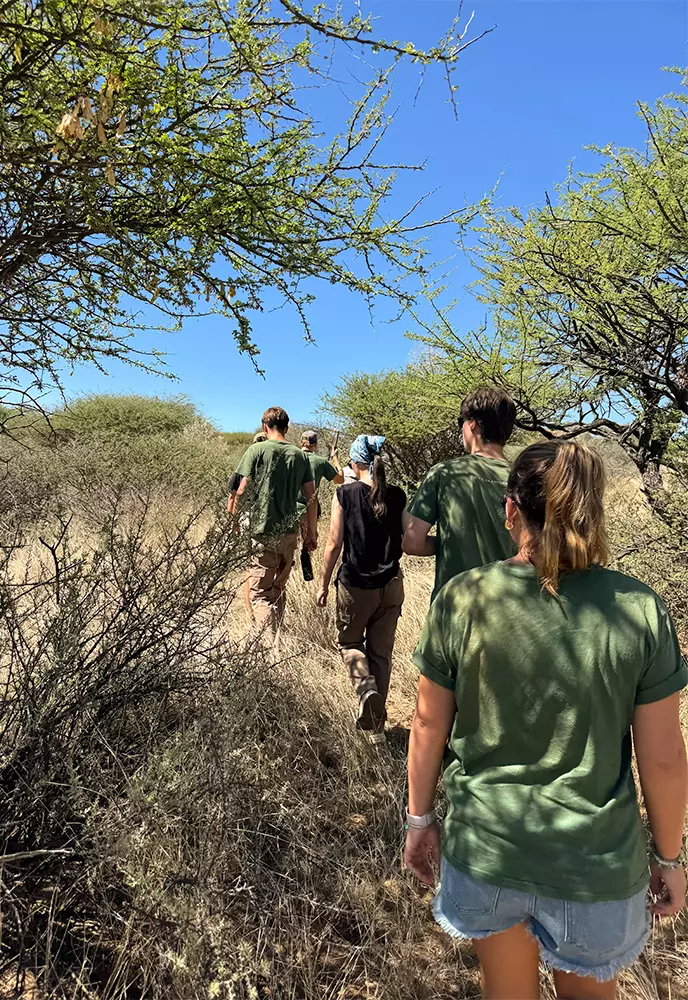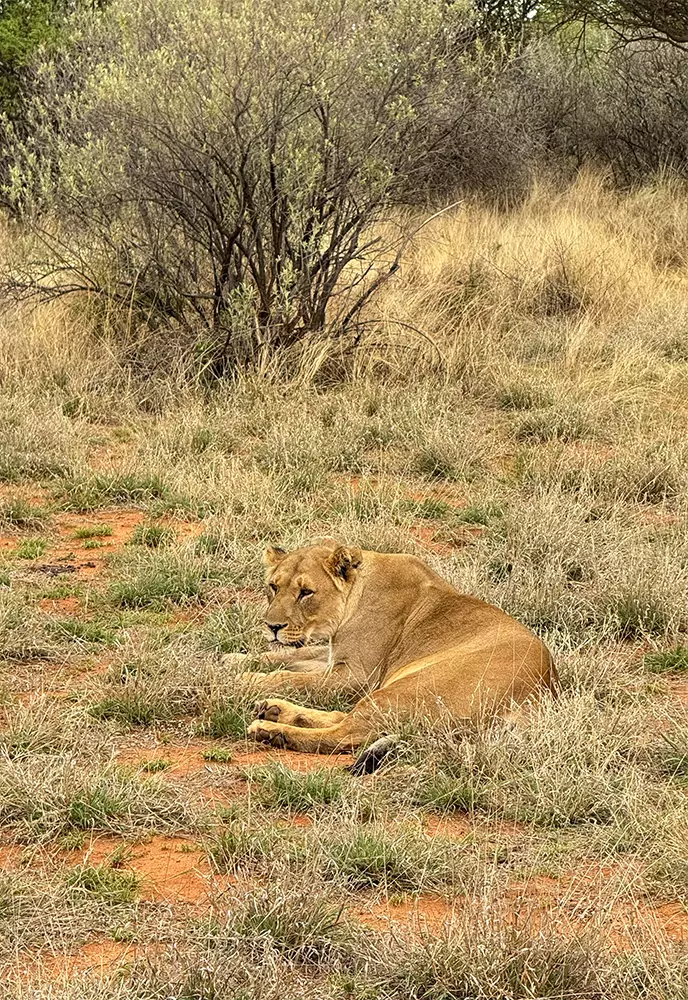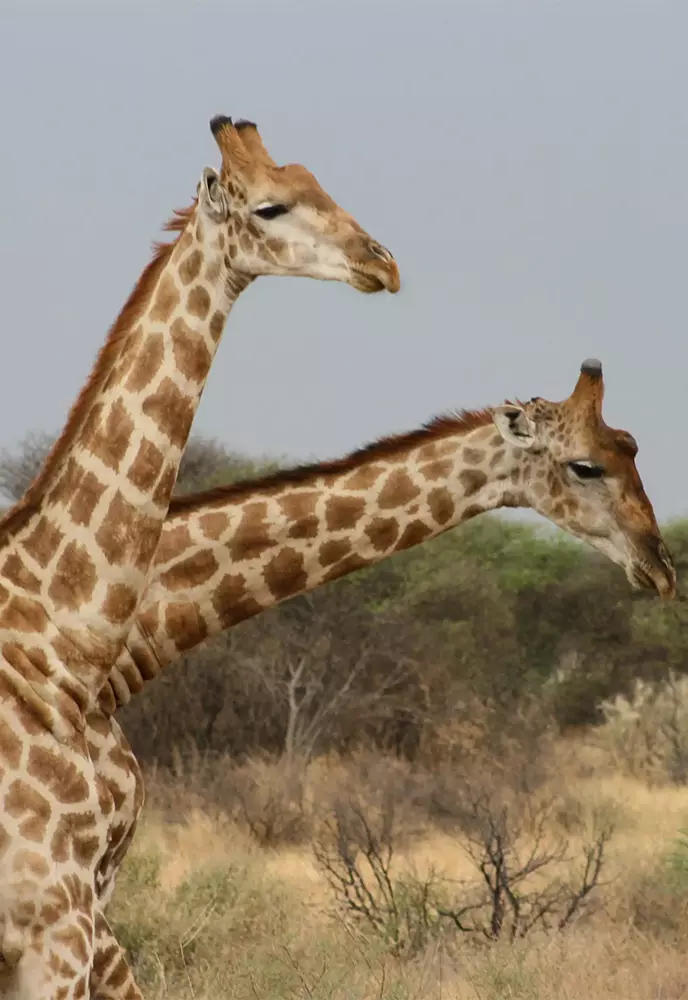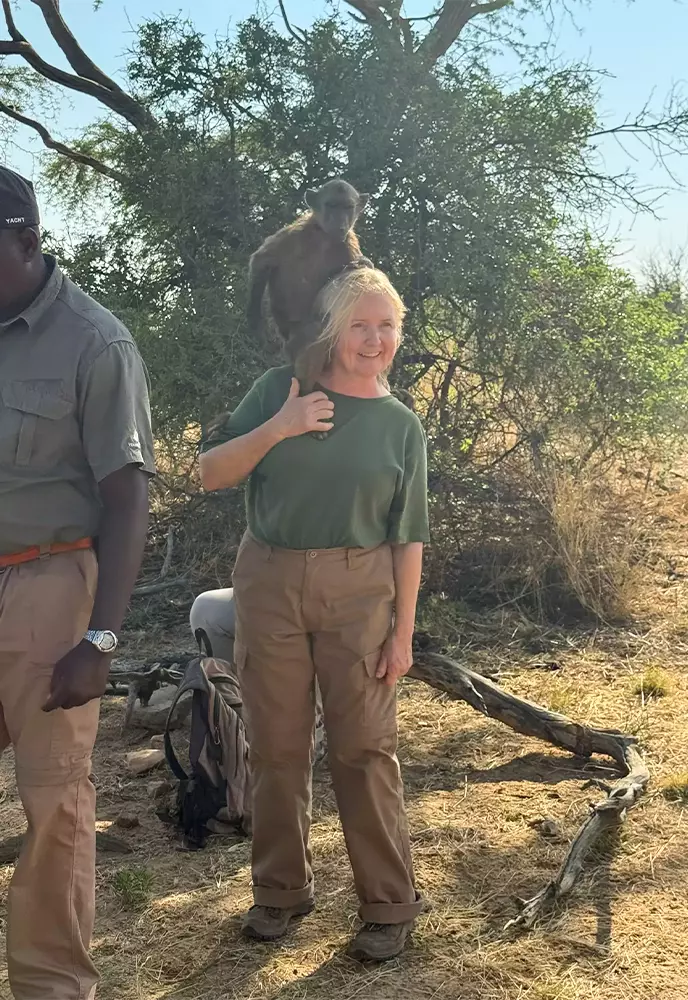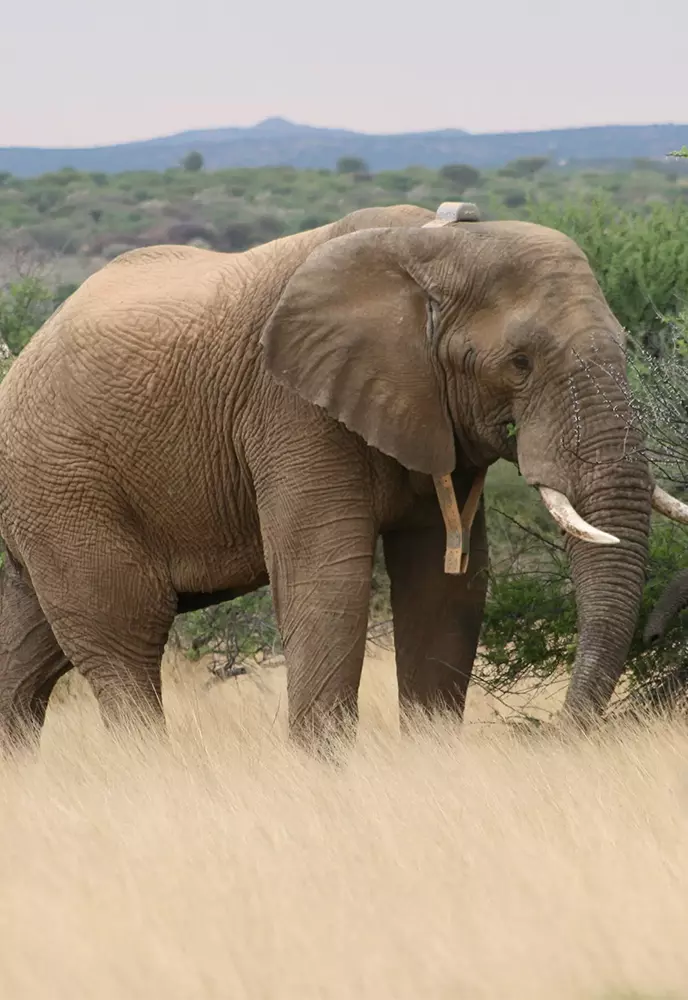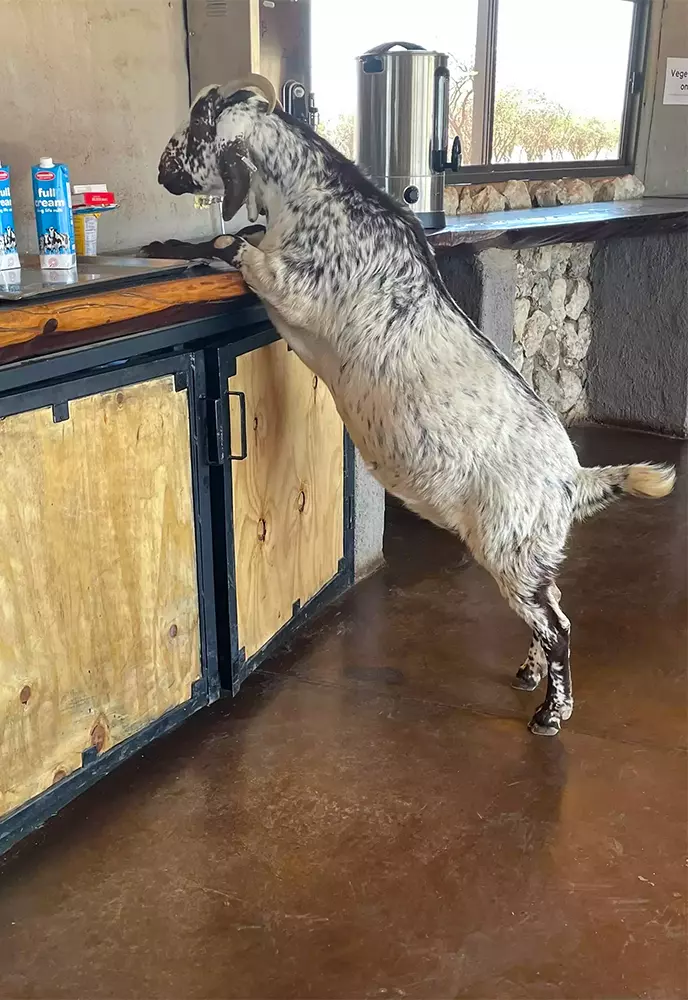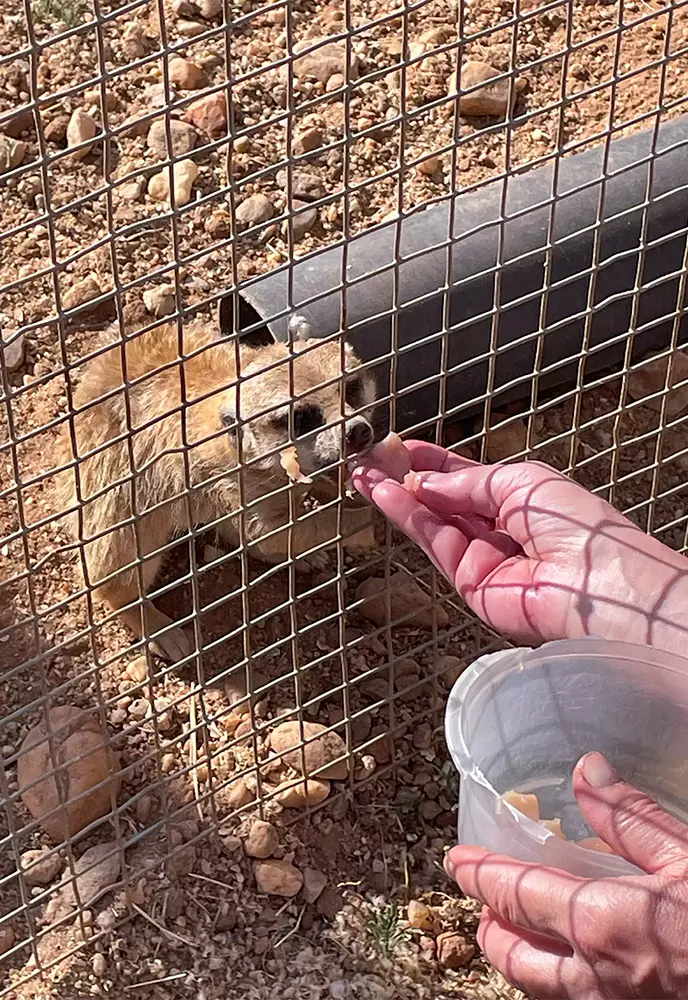

Namibia Wildlife Sanctuary
Experience hands-on conservation efforts with big cats, baboons and much more as a volunteer at the Namibia Wildlife Sanctuary!
Speak To A Travel Expert
Activities
During your time on the project, you will have the opportunity to engage in a wide variety of activities. These will vary depending on the needs of the sanctuary, with other activities not listed here potentially taking place too.

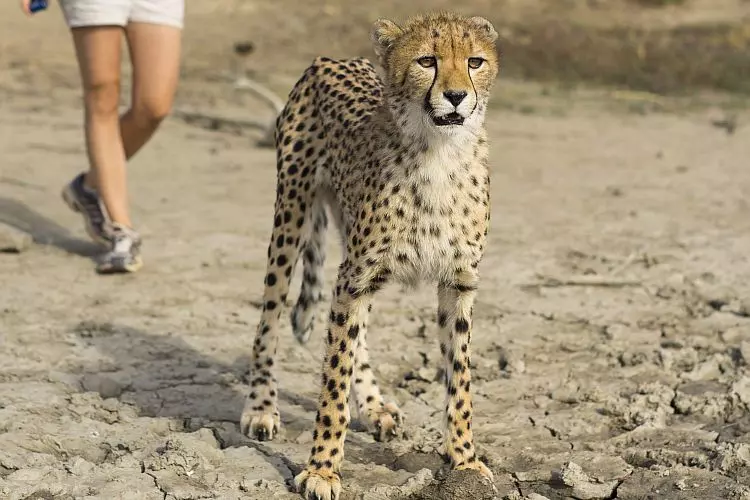
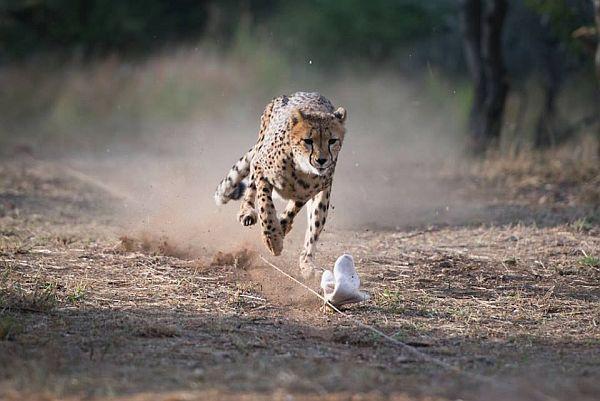
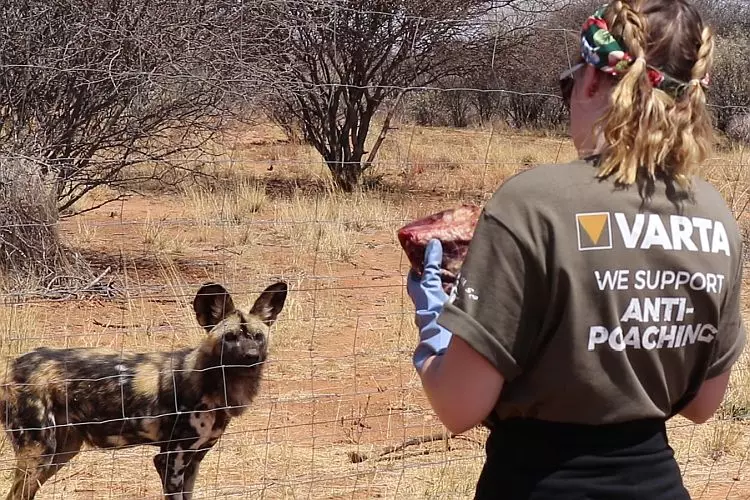
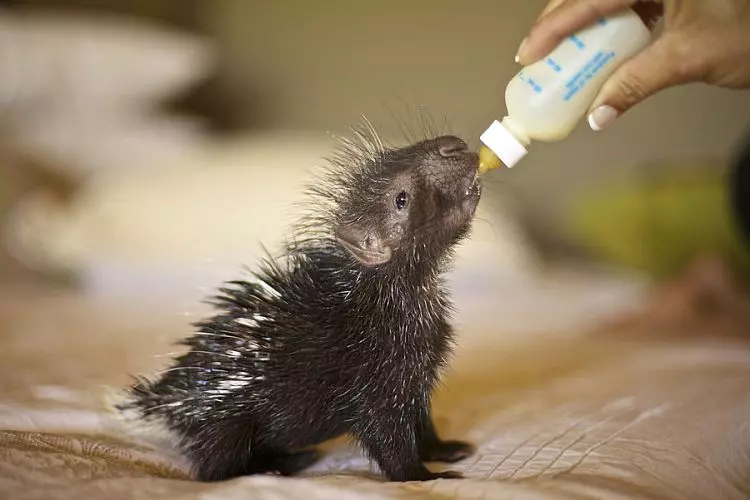


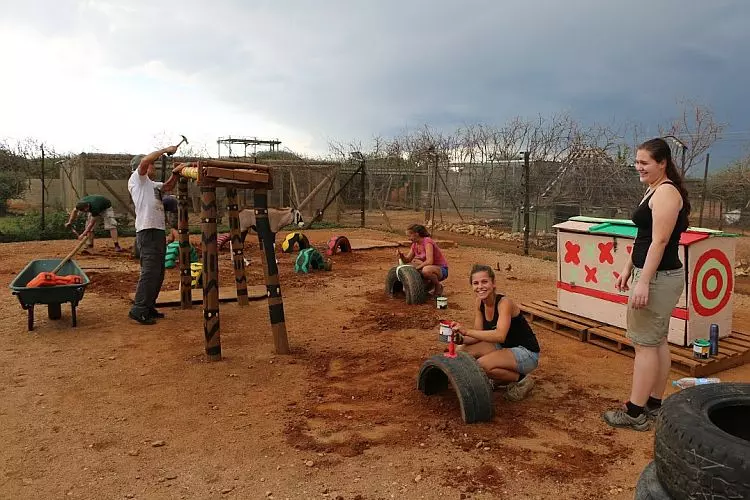

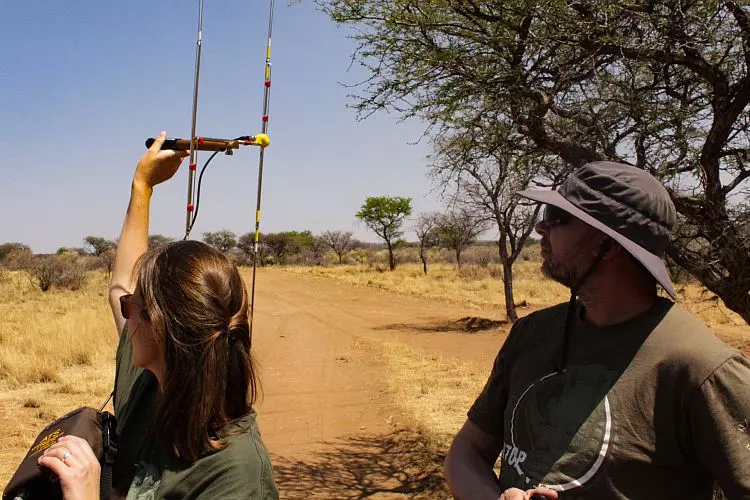



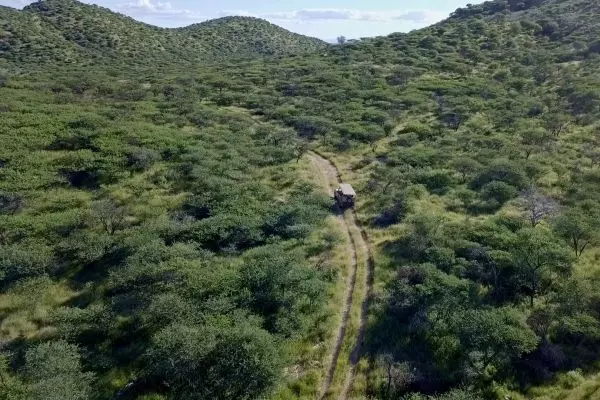
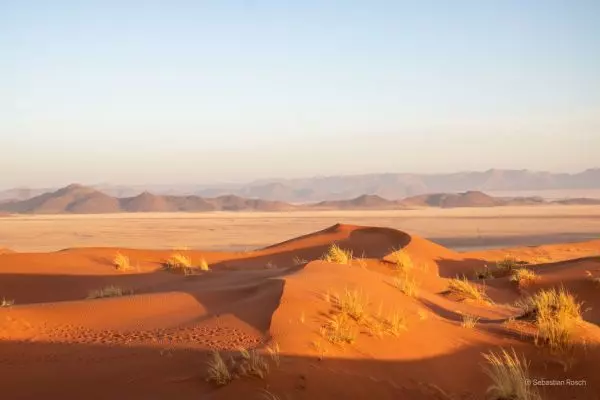
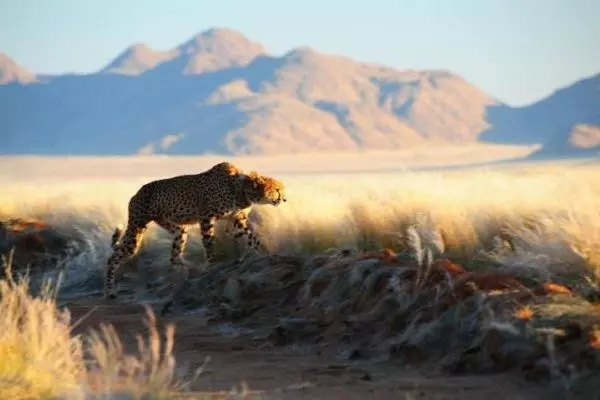
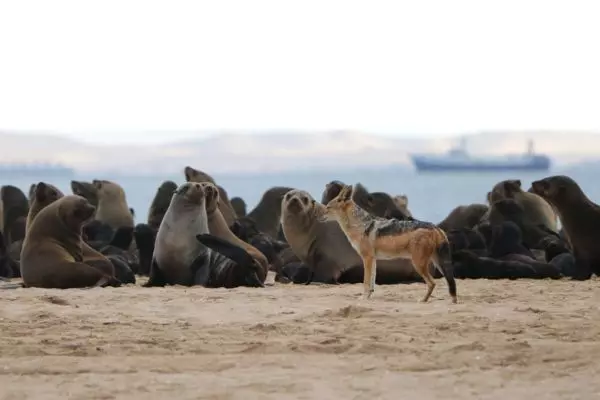
Itinerary
You can volunteer at the Namibia Wildlife Sanctuary in Africa for 2 to 12 weeks. Whilst on the project, you will be divided into smaller teams to ensure variety and equal opportunity when carrying out tasks and joining activities. Below is an example of a two-week stay, which will repeat for those who stay longer.
Durations & Prices
Accommodation
Volunteer Accommodation
During your time on the project, you will stay in a fixed canvas cabin/tent. Each is complete with bed linens, plug sockets, electric lighting, and an open-roofed bathroom with a Western-style toilet and shower. Hot water is available for showers, however, as it is provided by solar energy, please be aware that it cannot always be guaranteed.
The accommodation is provided on a twin or triple-share, same-sex basis (except for couples who will be accommodated together), but it is also possible to pay a single supplement to have your own room (depending on availability).
Accommodation Upgrade
If you’d like to spend a night, a weekend or more of your volunteer experience in luxury, you can book a chalet at the beautiful on-site lodge. Each chalet boasts a private veranda overlooking the bushveld, air-conditioning and an en-suite bathroom. The lodge itself has a tranquil dining area with stunning views, a bar, and a swimming pool.
A night at the luxury lodge is charged at an additional $250 per night for a single room and $203 per night per person for a double room, and includes transfers, dinner and breakfast. For more information or to check availability, please contact our travel team.
Meals & Beverages
Three meals a day are provided for you at the sanctuary, with water, tea and coffee freely available. Breakfast includes toast, cereal, fruit and juices, whilst lunch typically consists of pasta, burgers, stir-fry and wraps. Dinner includes meat, fish, vegetables, potatoes and pasta served in a buffet style, and on weekends there is often a braai (a traditional African barbeque)! A vegetarian option is always available, and vegans can be catered for too. Additionally, a range of snacks and drinks (including alcoholic beverages) can be purchased at the sanctuary.
Project Details
When is the best time to volunteer?
As this project is based at a wildlife sanctuary, there are animals here year-round, meaning there is no favourable time to volunteer regarding wildlife. Weather, however, can impact some people’s decision, and there are two distinct seasons which are explained in more detail below.
October – April: The daytime temperature during these months is between 27-32°C (81-90°F), and it remains warm at night with temperatures of around 15°C (59°F). December to March is also the rainy season, with some rain expected every few days, but not too much.
May – September: This is the driest period of the year, with nearly no rain at all. It is also cooler during the day; however, temperatures still reach 28°C (82°F). The biggest difference during this season is the night-time temperature which is much colder and averages 7°C (45°F) but can drop below freezing. Therefore, if you travel during these months, you will need some warmer clothes for the evening.

Public Holidays: Throughout the year, Namibia observes certain public holidays, including Christmas and Easter. On these days, activities are limited and primarily focused on animal feeding. Therefore, please be aware that if you join during a time when public holidays occur, your itinerary will be more limited on these days. (Public Holidays in 2026: January 1st, March 21st, April 3rd & 6th, May 1st, 4th, 14th, 25th & 28th, August 26th, December 10th, 25th & 26th.)
Booking Flights
You will need to fly into Windhoek International Airport (Hosea Kutako International Airport, airport code WDH) on your project start date, arriving between 7am - 5pm. You will be met in the Arrivals Hall and transferred to the sanctuary in a private vehicle. This transfer will take approximately 45 minutes.
There are several daily flights from the South African hub cities of Johannesburg and Cape Town, as well as a range of international destinations.
For your departure, you will need to book a flight that departs between 7am and 7pm, and you will be transferred back to the airport in time for your flight.
Visa Requirements
Citizens of most countries, including the UK, USA, Canada, Australia, Germany and most of those within the EU, will need to obtain a Visa On Arrival to enter Namibia.
This visa can be obtained online prior to travel and will permit a stay of up to 90 days. You will need at least 3 blank pages in your passport (which must be valid for a period of at least 6 months from your date of entry) for the immigration officials to use, and you must pay the visa application fee of N$1,600 (approximately $95).
If you are unsure of your individual visa requirements, we recommend speaking to your local Namibian embassy at least 2 months prior to travel.
Fitness & Skills
You will take part in a range of activities on this project, including construction and maintenance tasks; therefore, a moderate level of fitness is recommended. No specific skills are required; all we ask is that you arrive with a willingness to get involved with all activities and that you aren’t afraid to get your hands dirty! Respect for wildlife and the ability to work as part of a team are also important qualities for any volunteer.
Vaccinations
There are no specific vaccination or medical requirements needed to join this project. The vaccinations required will depend on the individual medical history of each volunteer. We recommend that you consult with your doctor/GP regarding your own vaccination needs as this will ensure you are protected and prepared to travel. In conjunction with this, we also recommend taking a look at the Travel Health Pro website for more helpful information on how to best prepare for your experience.
Videos
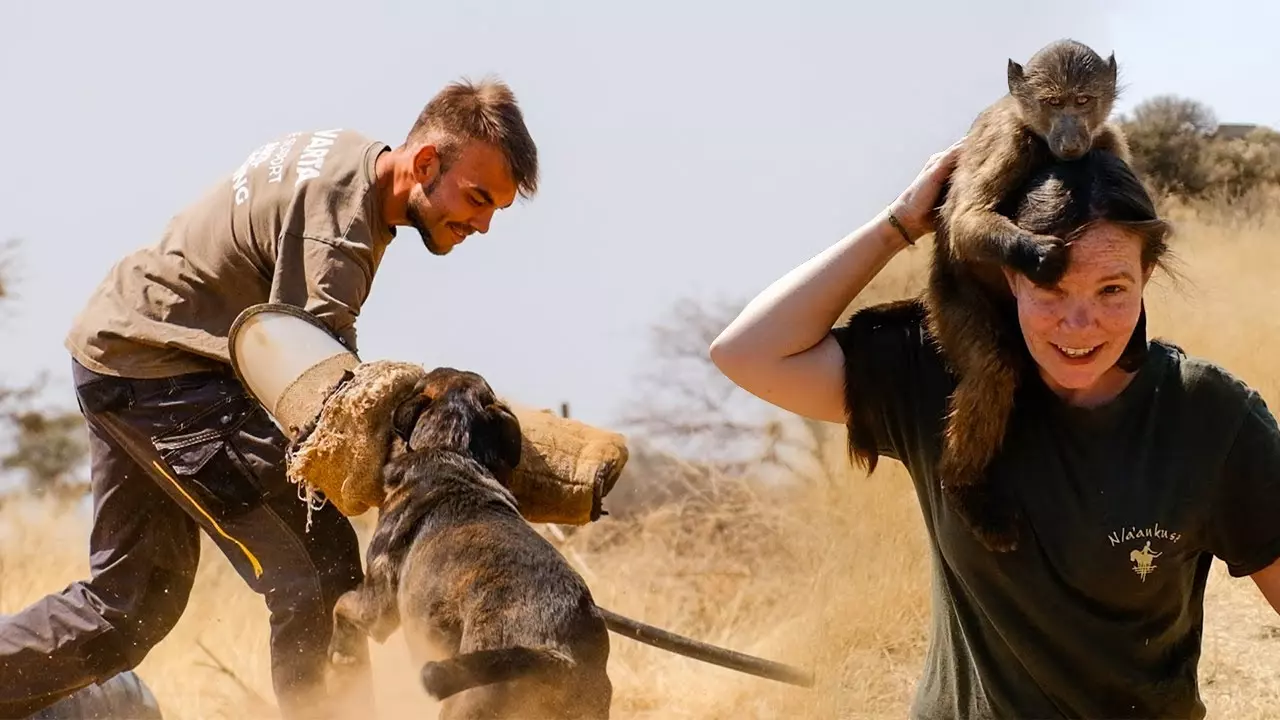
Experience The Namibia Wildlife Sanctuary
See what you could get up to as a volunteer at the Namibia Wildlife Sanctuary! This volunteer project offers you the chance to get up close and personal with some of the country's most iconic species.
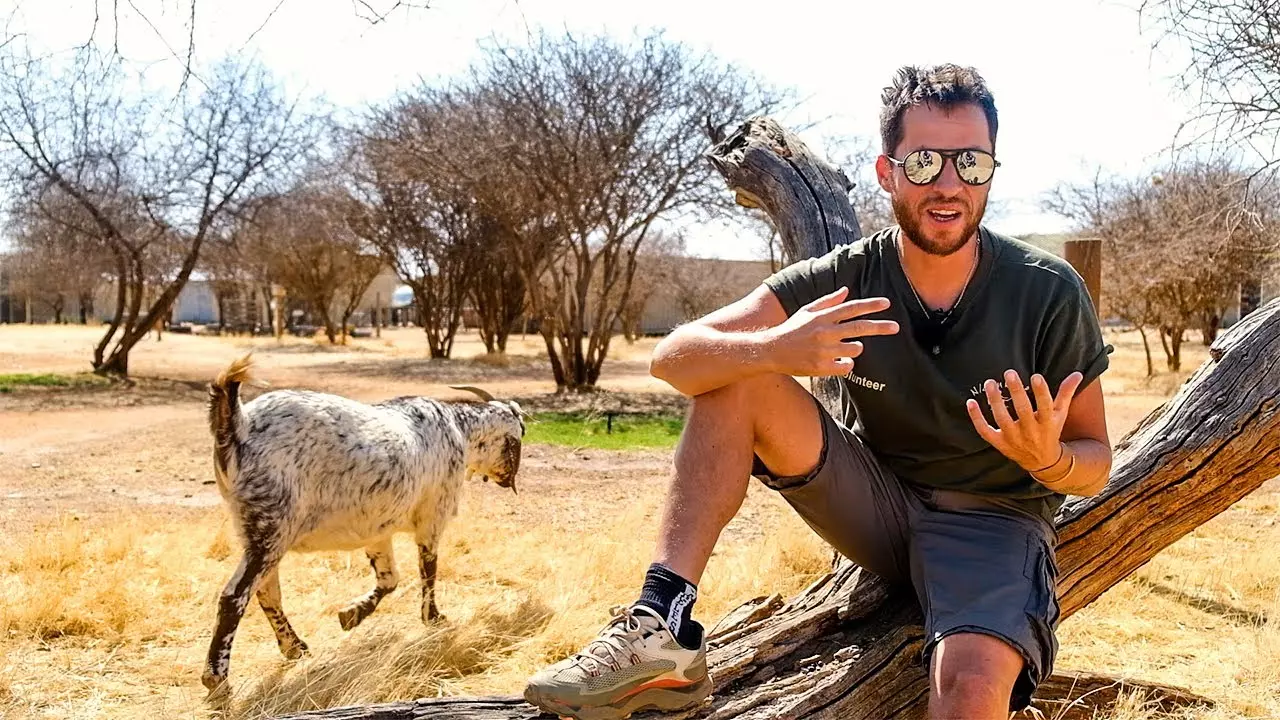
Volunteers Review Their Time at the Sanctuary
Meet Paulina, Liz, Tom and Laurent who review the time they spent at the Namibia Wildlife Sanctuary.
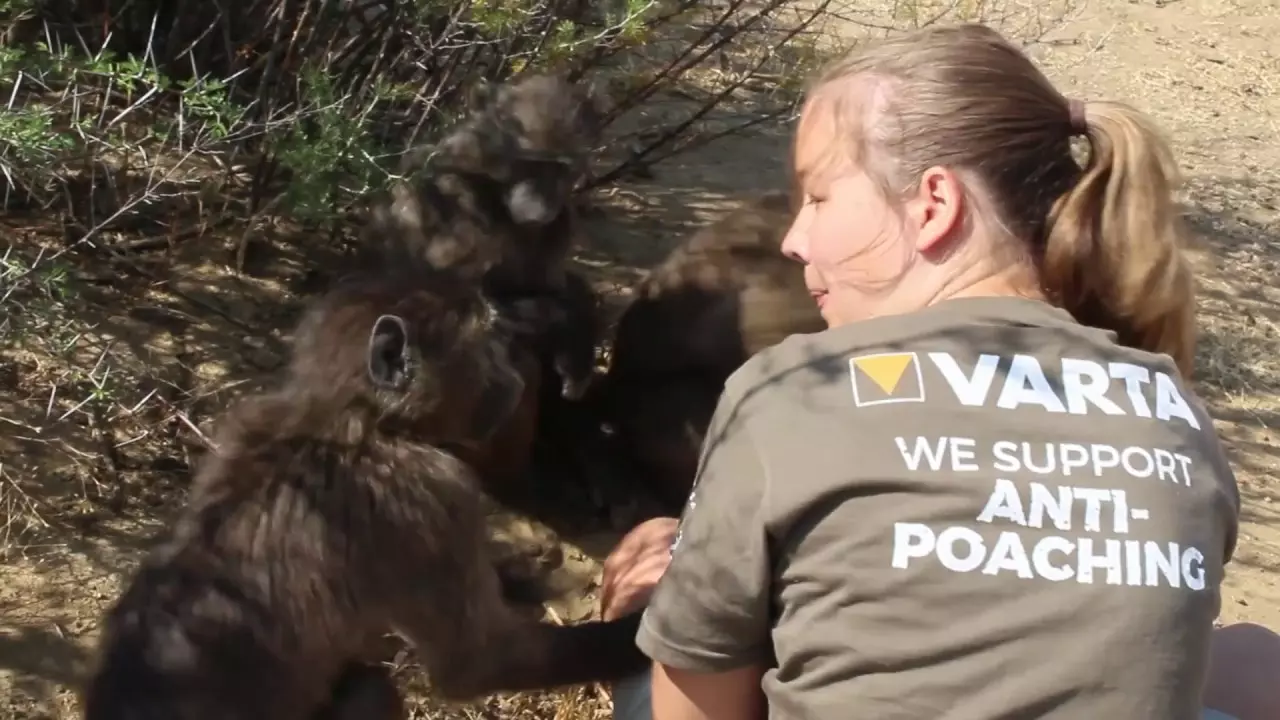
A Minute With The Baboons
Spending time with the baboons is a firm favourite activity among all volunteers. Take a look and find out why!

A Minute With The Carnivores
From lions and cheetahs to African wild dogs, take a look at some of the resident carnivores you might meet at the sanctuary.
Gallery
News & Stories
NEWS | Jan 2026
Limited on time, want to volunteer more, or just curious about how to maximise your 2026 UK bank holidays with smart annual leave planning? Check out our honest guide to bank holiday travel planning!

Baby Bat Rescue
UPDATE | Jan 2026
Meet this tiny, adorable orphaned bat recently rescued by the sanctuary team! He has an impressive appetite for mealworms and is growing by the day. It won't be long before his wings are strong enough for him to be released, heading back into the wide Namibian skies.
REVIEW | Jan 2026
Read Puneet’s first-hand account of volunteering at a wildlife sanctuary in Namibia; from conservation work to community connections, and unforgettable friendships, this trip had it all.
Reviews
My time at Namibia Wildlife Sanctuary is one that I am going to treasure for the rest of my life. The experiences you will encounter on this trip are genuinely one of a kind! From going on game drives in the reserve with the research team, training with the K-9 unit, feeding both the small and ferocious carnivores to riding horseback through the Savannah, your days will be a story like no other. Within merely two weeks I’ve made friends with some truly incredible people, having chats around the fire, watching the sun rise or set from the viewing deck and having laughs on a Saturday night Braai. But it’s not just the animals that capture your heart out in Namibia, but the wonderful people. The staff and coordinators never fail to make you laugh, teach you all you know and seek to learn as much about your cultures as possible. And the students at the primary school are so vibrant and outgoing, they’ll have you dancing during Friday morning assembly before you know what you’re doing. And through it all you’ll have the most incredible time, eat some delicious food and return back to your cozy safari-style tent at... My time at Namibia Wildlife Sanctuary is one that I am going to treasure for the rest of my life. The experiences you will encounter on this trip are genuinely one of a kind! From going on game drives in the reserve with the research team, training with the K-9 unit, feeding both the small and ferocious carnivores to riding horseback through the Savannah, your days will be a story like no other. Within merely two weeks I’ve made friends with some truly incredible people, having chats around the fire, watching the sun rise or set from the viewing deck and having laughs on a Saturday night Braai. But it’s not just the animals that capture your heart out in Namibia, but the wonderful people. The staff and coordinators never fail to make you laugh, teach you all you know and seek to learn as much about your cultures as possible. And the students at the primary school are so vibrant and outgoing, they’ll have you dancing during Friday morning assembly before you know what you’re doing. And through it all you’ll have the most incredible time, eat some delicious food and return back to your cozy safari-style tent at the end of the night to enjoy a moonlit shower under the stars! (Show More)
This was such a rewarding experience and surpassed all my expectations! Being able to spend time with the animals in such close proximity was incredible. Both the cheetah and baboon walks were definitely highlights. I was amazed at the extent of the project and now have knowledge of so many different aspects of sanctuary and reserve life. E.g k9, Anti poaching unit, rhino rangers and helping in the school! The staff were all incredible and I formed friendships with other volunteers from all over the world. I plan to return and visit other projects connected to the sanctuary. Thank you to The Great Projects team for organising!
The project was everything I hoped for. From booking the trip, customer service and provision of all relevant information before thew trip to the very well organised Namibia Wildlife Sanctuary. Their staff was very friendly and helpful, excellent food and even some entertainment at the weekends was available. Some volunteers didn't realise that there is some physical work involved, which is needed to keep the place running. I actually enjoyed it and it gave me a good insight of what is involved in the day to day tasks of a sanctuary. I loved, loved, loved the animals. My favourites were the baboon babies and the horses, as it was very hands-on with them. Being close to the cheetahs was also an experience not to be missed. The Rhino Rangers experience was unbelievable and the K9 unit is a must. I had the chance to be teacher in the Namibia Primary School for one day and I was delighted to see how respectful, happy and energetic the children were, despite their challenging circumstances. I really enjoyed their Friday assemblies with music and dance. I was sad to leave after 3 weeks.
What's Included
- Accommodation
- Three meals per day
- Water, fruit juice, tea and coffee
- Private airport transfers to and from Windhoek International Airport or Windhoek City
- Full orientation and support from the project managers for the duration of your project
- A conservation contribution to the project, funding items such as building materials, food, and animal medications
- 1 x Set of volunteer uniform (t-shirt & trousers/shorts) - additional sets can be purchased for approx. $42
- Wi-Fi
What's Not Included
- Flights
- Soft and alcoholic beverages







































